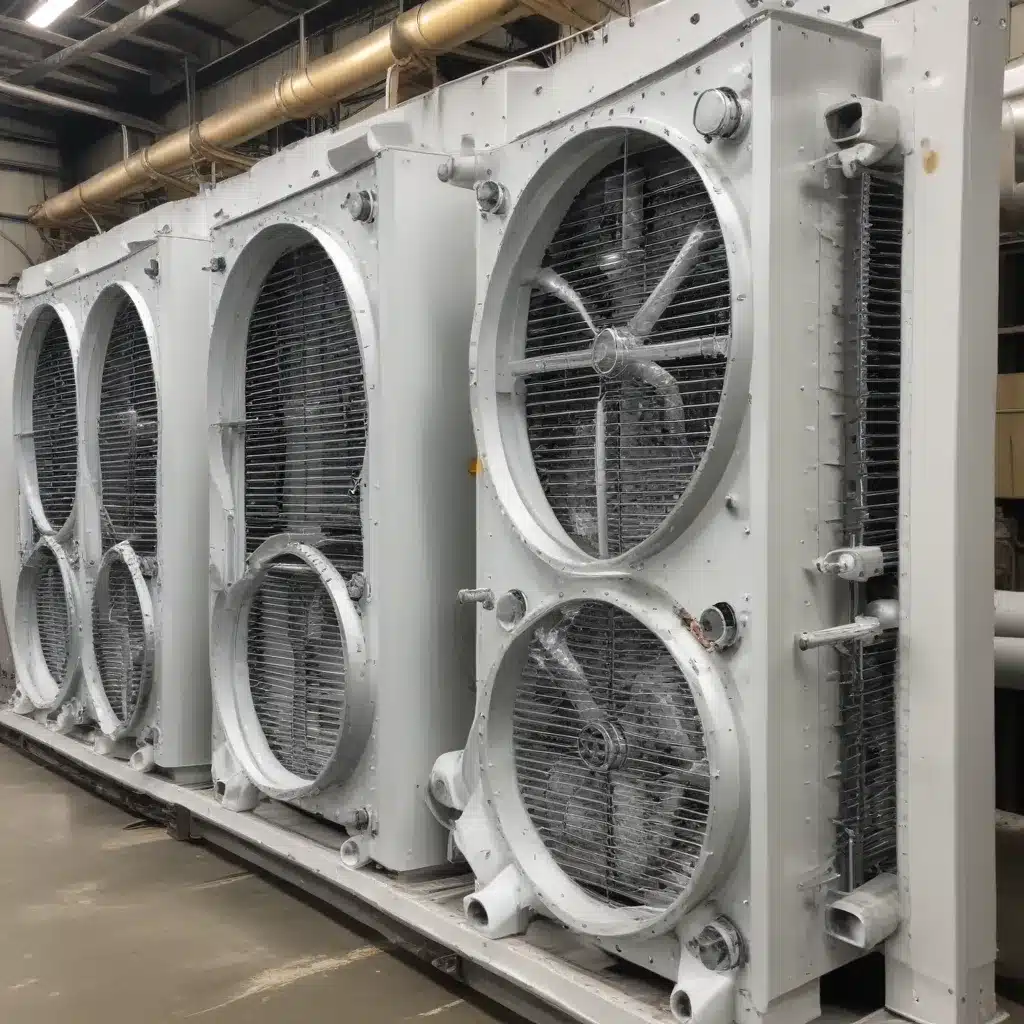
Understanding the Importance of Air-Cooled Heat Exchangers
Air-cooled heat exchangers play a crucial role in various industries, from power generation and manufacturing to HVAC systems and refrigeration. These versatile pieces of equipment transfer heat between a hot fluid (such as air, water, or oil) and a cooler fluid, enabling efficient thermal management and energy savings. As industries strive to enhance sustainability and reduce their environmental footprint, the importance of maximizing the performance and efficiency of air-cooled heat exchangers has become increasingly paramount.
The Versatility of Air-Cooled Heat Exchangers
Air-cooled heat exchangers offer several advantages over their water-cooled counterparts. They eliminate the need for a continuous water supply, making them suitable for remote or arid locations where water resources are scarce. Additionally, air-cooled systems require less maintenance, as they do not rely on water treatment and are less prone to fouling and scaling issues. This simplicity translates to reduced operational and maintenance costs, making air-cooled heat exchangers an attractive choice for many applications.
Enhancing Energy Efficiency through Optimal Design
The design of air-cooled heat exchangers is a critical factor in determining their energy efficiency. Factors such as fin geometry, tube arrangement, and airflow optimization can significantly impact the heat transfer performance and the overall energy consumption of the system. By carefully considering these design elements, engineers can develop air-cooled heat exchangers that operate with maximum efficiency, reducing energy usage and lowering operating costs.
Maintenance Strategies for Optimal Performance
Maintaining air-cooled heat exchangers is essential to ensure their continued efficient operation and extended service life. Neglecting regular maintenance can lead to a gradual decline in performance, increased energy consumption, and potentially costly breakdowns.
Importance of Preventive Maintenance
Preventive maintenance is a proactive approach that involves regularly inspecting, cleaning, and servicing air-cooled heat exchangers. This includes tasks such as cleaning the finned surfaces, checking for air leaks, and monitoring the condition of the fan motors and other critical components. By addressing minor issues before they escalate, preventive maintenance helps maximize the efficiency and reliability of the heat exchanger system, ultimately reducing energy costs and extending its lifespan.
Addressing Common Maintenance Challenges
One of the primary challenges in maintaining air-cooled heat exchangers is the buildup of dirt, debris, and contaminants on the finned surfaces. This accumulation can significantly impede airflow and reduce the heat transfer efficiency of the system. Regular cleaning, using techniques such as high-pressure water or compressed air, is essential to maintain optimal performance.
In addition to cleaning, regular inspections and monitoring of the heat exchanger’s components, such as the fans, motors, and control systems, can help identify and address potential issues before they lead to system failures. Proactive maintenance, including the replacement of worn parts and the lubrication of moving components, can further enhance the long-term reliability and efficiency of the air-cooled heat exchanger.
Optimizing Air-Cooled Heat Exchanger Performance
Beyond maintenance, there are several strategies and technologies that can be employed to optimize the performance of air-cooled heat exchangers and unlock their full potential for energy efficiency.
Innovative Fin Designs and Materials
Advancements in fin design and materials have led to significant improvements in the heat transfer capabilities of air-cooled heat exchangers. Novel fin geometries, such as louvered or wavy fins, can enhance airflow and heat transfer, while the use of high-conductivity materials, like aluminum or copper, can further improve thermal performance.
Integrating Advanced Controls and Automation
The integration of advanced control systems and automation technologies can significantly enhance the energy efficiency of air-cooled heat exchangers. These systems can monitor and adjust key parameters, such as fan speed, airflow, and heat load, in real-time to optimize the heat transfer process and minimize energy consumption.
Harnessing Renewable Energy Sources
In line with the growing focus on sustainability, some organizations are exploring the integration of air-cooled heat exchangers with renewable energy sources, such as solar or wind power. This hybrid approach can reduce the reliance on grid-supplied electricity and further improve the overall energy efficiency of the system.
Emerging Trends and Future Developments
The air-cooled heat exchanger industry is continuously evolving, with researchers and industry professionals exploring new technologies and approaches to enhance performance and energy efficiency.
Advancements in Materials and Coatings
Ongoing research in materials science and surface engineering is leading to the development of more durable, corrosion-resistant, and fouling-resistant coatings for air-cooled heat exchanger components. These advancements can extend the lifespan of the equipment and reduce maintenance requirements, contributing to improved energy efficiency and cost savings.
Artificial Intelligence and Machine Learning
The integration of artificial intelligence (AI) and machine learning (ML) technologies is transforming the way air-cooled heat exchangers are monitored and optimized. These advanced analytics tools can analyze real-time data, identify patterns, and make intelligent adjustments to operating parameters, ensuring optimal performance and energy efficiency even as operating conditions change.
Hybrid and Integrated Systems
The future of air-cooled heat exchangers may lie in the development of hybrid and integrated systems that combine multiple cooling technologies or integrate with other energy-saving systems. For example, integrating air-cooled heat exchangers with thermal energy storage or waste heat recovery systems can further enhance the overall energy efficiency and flexibility of the system.
Conclusion
Air-cooled heat exchangers play a vital role in various industries, and their importance in the pursuit of energy efficiency and sustainability is undeniable. By understanding the design considerations, implementing effective maintenance strategies, and leveraging emerging technologies, organizations can unlock the full potential of air-cooled heat exchangers to achieve significant energy savings, reduce operating costs, and contribute to a more sustainable future.
To learn more about the latest advancements and best practices in air-cooled heat exchanger technology, visit the Air Cooled Heat Exchangers website. Our team of experts is dedicated to providing valuable insights and practical solutions to help you optimize the performance and efficiency of your air-cooled heat exchanger systems.

